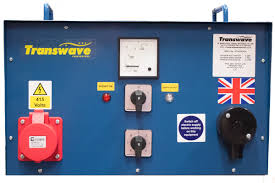Introduction
In a world driven by technological leaps, the term Transwave is making waves—literally and figuratively—across multiple industries. From revolutionizing audio synthesis to advancing photonic systems, and even appearing in vintage electronics and power conversion, Transwave is not just a term—it’s a technology movement.
This blog explores the evolution, innovation, and application of Transwave across various domains, with sections dedicated to each key context. Whether you’re an audiophile, engineer, or tech enthusiast, this deep dive will give you a new appreciation for the dynamic potential of Transwave.
🎶 Transwave in Audio Synthesis
🔊 What is Transwave Synthesis?
Transwave synthesis is a form of wavetable synthesis that allows dynamic, frame-by-frame control over a waveform’s evolution. Unlike simple sampling techniques that replay a static sound, a Transwave is a series of waveform snapshots—known as frames—arranged sequentially in a wavetable.
This creates a modulating and evolving tone that changes over time as the wavetable progresses. Musicians can manipulate this progression using modulation sources such as velocity, aftertouch, or an LFO (Low Frequency Oscillator).
🎹 Application in Musical Instruments
One of the most iconic applications of Transwave synthesis was seen in Ensoniq synthesizers like the ASR-10 and Fizmo. These instruments used Transwaves to generate lush pads, evolving leads, and intricate ambient textures.
For performers, the real-time manipulation of harmonic content using Transwave synthesis offers unmatched expressiveness. It’s particularly effective in genres like ambient, techno, and cinematic music where evolving textures matter.
🔁 How it Differs from Traditional Synthesis
| Feature | Traditional Sampling | Transwave Synthesis |
|---|---|---|
| Sound Evolution | Static | Dynamic |
| Modulation Flexibility | Limited | Extensive |
| Expressiveness | Medium | High |
| Processing Load | Low | Medium to High |
💡 TransWave Photonics
🏢 Who Are They?
TransWave Photonics is a high-tech research company focusing on the development of photonic integrated circuits (PICs). Based in the U.S., their core innovation lies in the monolithic integration of both active and passive optical components to streamline and miniaturize complex optical systems.
🔬 Key Innovations
1. High-Power Single-Mode Lasers
They’ve developed high-performance single-mode lasers capable of delivering large output powers while maintaining efficiency and beam quality. This has major implications for:
-
Optical communication
-
LIDAR systems
-
Industrial laser processing
2. Infrared LED Arrays
Designed for infrared scene projectors, their LED arrays enable high-speed, high-resolution simulations of infrared environments. These arrays play a key role in:
-
Defense system simulations
-
Hardware-in-the-loop (HIL) testing
-
IR sensor calibration
3. Metasurface Technology
By engineering 2D optical metasurfaces, TransWave Photonics can manipulate light at the nanoscale. This includes:
-
Light focusing and steering
-
Beam shaping
-
Power limiting
⚡ Transwave in Electrical Engineering
🔧 Transwave Converters
Another fascinating application of Transwave technology exists in the power electronics industry. Here, Transwave converters help bridge the gap between single-phase and three-phase electrical systems.
🏠 Where Are These Converters Used?
In many rural or domestic setups, industrial machines designed for three-phase power can’t be operated directly. Transwave converters offer a simple, cost-effective solution. They:
-
Allow operation of industrial machinery on single-phase supply
-
Avoid the need to modify expensive equipment
-
Are commonly used in home workshops, farms, and small businesses
🌀 Benefits
-
Cost-Efficient: Eliminates need for grid-level upgrades
-
Plug-and-Play: Simple to install and use
-
Reliable: Proven for long-term, heavy-duty use
📻 Transwave in Vintage Electronics
📺 The Golden Age: Transwave TW-10 Radio
The Transwave TW-10, a 10-tube stereo AM/FM radio, was manufactured in the early 1960s. This device is an artifact of technological history, showcasing how Transwave was branded and used even during the mid-20th century.
🛠️ Features of the TW-10
-
Beautiful wooden cabinet design
-
Stereo output through vacuum tube amplification
-
Multiband tuner with AM/FM reception
-
Remarkable audio warmth due to analog components
This radio stood as a symbol of audio excellence in its time—long before digital became dominant.
🧪 Transwave in Scientific Research
🔍 Uses in Signal Processing
Transwave principles are increasingly being adapted in scientific fields, especially in signal processing for biomedical devices, radar, and advanced computation. Benefits include:
-
Greater signal resolution
-
Enhanced data modulation and demodulation
-
Real-time adaptability for dynamic systems
🔧 Integration in Research Labs
Whether it’s creating new materials or analyzing seismic activity, scientists rely on tools that transmit and evolve signals. Transwave technology helps in processing multi-frequency data more efficiently and in real time.
🛠️ Transwave in Modern Industrial Systems
⚙️ Automation and Control
In industries requiring precise automation, Transwave controllers are being integrated into:
-
CNC Machines
-
Automated Sorting Systems
-
Smart Grid Monitoring Systems
They ensure smooth signal translation, allowing for responsive actions based on real-time data inputs.
🏗️ Applications in Heavy Industry
In steel mills, automotive factories, and textile plants, where machines often run on multi-phase power or need signal modulation for safety, Transwave-driven interfaces offer:
-
Improved load balancing
-
Vibration damping through frequency control
-
Automated error detection and correction
📈 Future Trends and Innovations in Transwave
🌐 AI + Transwave = Intelligent Systems
Imagine coupling artificial intelligence with Transwave signal control—resulting in smart systems that self-correct, optimize operations, and learn over time. This hybrid tech is already being tested in:
-
Predictive maintenance
-
Smart energy distribution
-
Advanced audio mastering
🛰️ Transwave and Space Tech
Transwave innovations are being explored for:
-
Space communications
-
Radiation-resistant data relays
-
Energy-efficient satellite modulation systems
🔮 The Next Decade
In the next ten years, you can expect to see:
-
Transwave-enabled wearable health tech
-
Smart speakers using adaptive Transwave synthesis
-
Military and aerospace systems with nano-precise Transwave photonics
🧾 Conclusion
Transwave isn’t just a relic of past technologies or a niche audio technique—it’s a multi-domain marvel that has quietly powered revolutions in music, electronics, engineering, and science. From vintage radios to space-bound photonics, Transwave continues to shape our auditory, visual, and electrical worlds.
As innovation accelerates, so too does the evolution of Transwave, proving that the best waves are the ones you ride into the future.
❓ FAQs
1. What makes Transwave synthesis different from traditional wavetable synthesis?
Transwave synthesis involves the dynamic evolution of waveforms across multiple frames, whereas traditional wavetable synthesis often uses static, unchanging waveforms. This results in richer, more expressive sounds.
2. Can Transwave converters be used at home?
Yes, they are ideal for home workshops or small businesses where single-phase power needs to run three-phase machines.
3. What are metasurfaces in TransWave Photonics?
Metasurfaces are engineered 2D surfaces that manipulate light in advanced ways—focusing, steering, and altering beams for communication or sensing applications.
4. Is Transwave technology used in smart devices?
Absolutely. Smart speakers, audio production tools, and even some industrial automation systems are beginning to incorporate Transwave synthesis and signal control.
5. How does Transwave benefit scientific research?
It provides adaptive and real-time signal modulation, improving accuracy in devices like biomedical scanners, weather instruments, and seismic detectors.







0 Comments